
Let's
Talk About ArtReach's A
Christmas Peter Pan
What
Does This Christmas Story Mean to You?
SNOW
FAIRIES: Ask
the class to pretend that they are snow fairies. What is your name
and what do you look like? Where do you live and why? Do you have a
magic wand, or could your special powers be in your shoe or your hat?
What are your magical powers? If the sun was shining brightly on you,
what would you do? Show how you would do it.
CHRISTMAS
CAROLS:
Which are your favorite Christmas Carols and why? Have everyone sing
a Christmas Carol. Now pretend you are a pirate singing the song.
What words would you change to make it sound more like a pirate?
CAPTAIN
HOOK TREASURE MAP:
Choose Christmas tree ornaments to be treasures. Hide them on the
around the school or on the playground and let the children find them
like an Easter egg hunt. Have them draw a map from their desk to the
place where they found the treasure. Look at places on a map or a
globe where pirates once sailed such as the Caribbean and Spain. Find
your home on the map and trace the way to the nearest port and then
to the place of the pirates' origin.
Discuss
Snow Fairies: "What are your magical powers?"
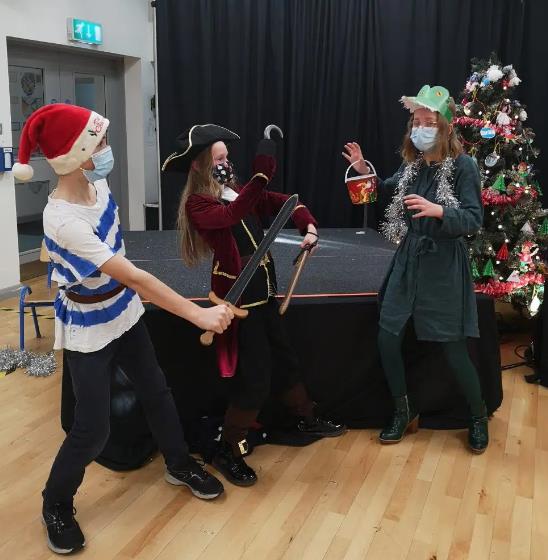
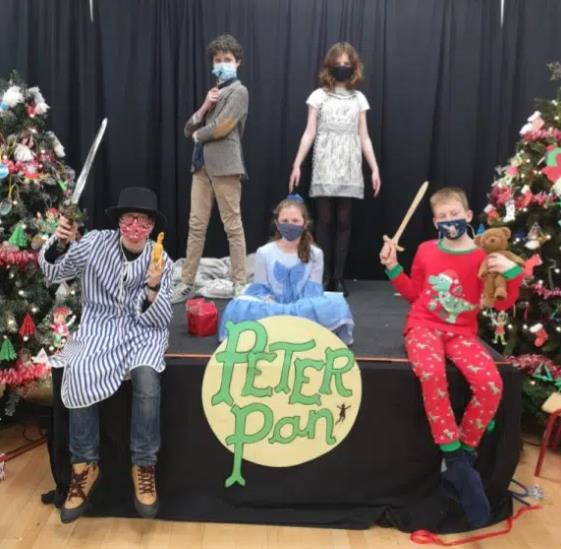
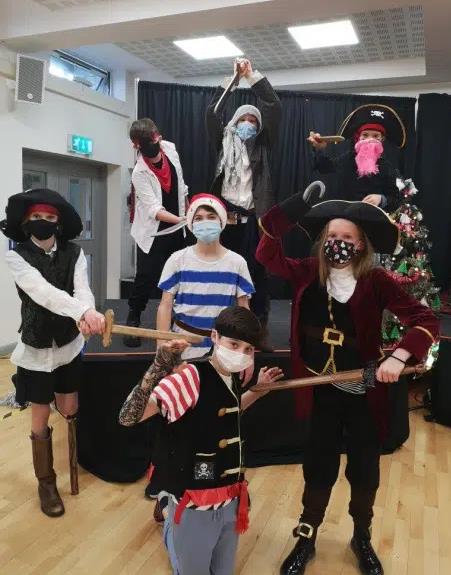
St. Matthews National School, Dublin,
Ireland - ArtReach's A
Christmas Peter Pan
SANTA
ELVES: If
you were an elf what would your name be and what kind of toy would
you make? What kind of materials would you use? Paper, wood, plastic,
glue? What tools would you use? Are these in your garage at home or
would you need to invent special magical tool? How long do you think
it would take you to make such a toy? Who would you give your toy to?
Draw picture of the toy you would like to give your best friend or
family member.
CROCODILE:
Have
everyone draw a picture of a crocodile. How wide is your crocodiles
mouth, how big are his teeth? What does he like to eat the best?
Discuss the difference between crocodiles and alligators. Look up
where they live and find them on a map. Do you think a crocodile
would rather live in a zoo or in the sea?
PIRATE'S
SHIP: Draw a
picture of a pirate ships and identify the various parts of the ship:
main deck, rigging, mast, sails, port, starboard, bow, stern. Pretend
that you are a pirate and you are being attacked by another ship.
What kind of treasure do you have on board and what will you do to
protect it? Pretend the Captain is a villain like Captain Hook and
stage a mutiny.
"Pretend
Christmas tree ornaments are treasures and hide them."
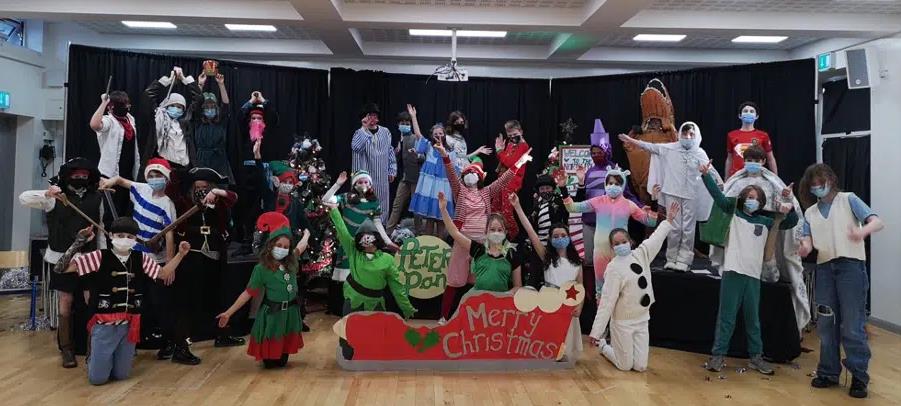
St. Matthews National School, Dublin,
Ireland - ArtReach's A
Christmas Peter Pan
CRAYONS:
Have each
child choose a color from a box of crayons. Ask what kind of
personality does your color have? Where does your color live (such as
green for forest, pink for flowers, blue for sky)? Think of the way
we use colors in our lives and what they mean to us. Are all the
colors in the box friends? Talk about the colors in a rainbow and how
rainbows create all colors. What does a rainbow mean to you?
CHRISTMAS
SLEIGH: In
the play Peter Pan discovers Santa's sleigh. Remember Cinderella's
sleigh made from a pumpkin and five white mice? If you could make
your sleigh out of anything what would it be made out of? What kind
of animals would pull it? Would it fly in the air or sail on the sea?
Who would ride in it and where would they go? Draw a picture of your
special sleigh.

The
Origins of “Jack Tales”in
the Appalachian Mountains
Classroom
Material
for Discussion, ArtReach's Mountain
Musical "Jack
and the Beanstalk"
We
all know the story of Jack
& the Beanstalk -- but did you know people have been sharing
Jack Tales for over 600 years? It's true! The first written Jack Tale
comes from 15th century England, but historians believe that Jack
existed in stories long before he was ever captured on paper. All the
stories tell of a clever (or sometimes lazy!) boy who played the role
of the trickster against a much bigger opponent than himself.
Sometimes it was the north wind, other times a giant! Usually, the
main character was called "Jack," so these stories became
known as "Jack Tales."
"Fee!
Fie! Foe! Fum! I smell the blood of an Englishman!"
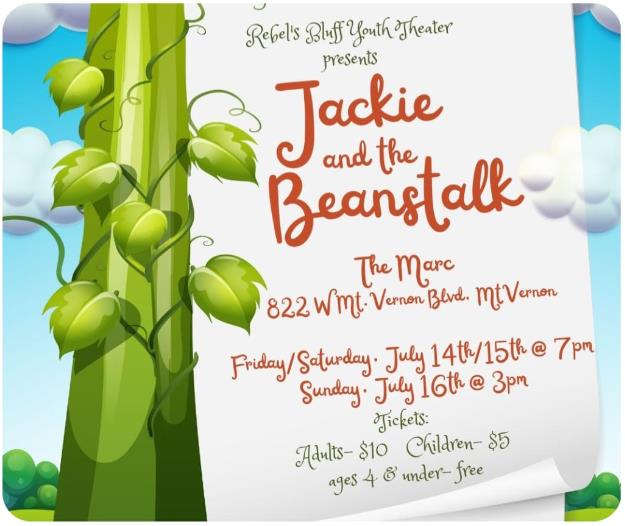
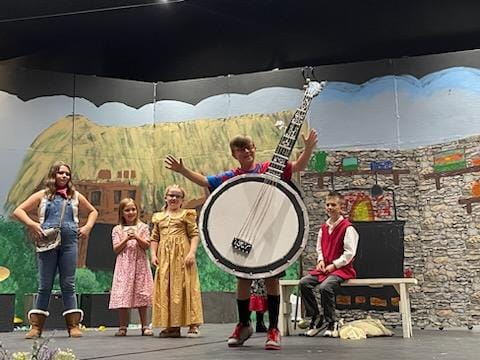
ArtReach's
Mountain Version of Jack
and the Beanstalk - Rebel's Bluff Youth Theatre, Mt. Vernon MO
Essentially,
the name “Jack” in tales serves as kind of shorthand for
“guy.” The two most well known of the Jack tales are
probably “Jack and the Beanstalk” and “Jack the Giant
Killer.” In “Jack and the Beanstalk,” Jack sells his
poor mother’s cow for a handful of magical beans. This
infuriates her, and she tosses the beans into the garden. They grow
into a thick stalk that climbs into the sky. Jack proceeds to climb
the stalk, find the land of a giant, and steal from him. The giant
pursues Jack. But the boy is able to scurry down the stalk fast
enough to chop it down and send the giant to his death. The giant's
cry "Fee! Fie! Foe! Fum! I smell the blood of an
Englishman!" appears in William Shakespeare's early-17th-century
King Lear in the form "Fie, foh, and fum, I smell the blood of a
British man." (Act 3, Scene 4.)
Walt
Disney made a short of the same name in 1922, and a separate
adaptation entitled Mickey and the Beanstalk in 1947 as part of Fun
and Fancy Free. This adaptation of the story put Mickey Mouse in the
role of Jack, accompanied by Donald Duck, and Goofy. Mickey, Donald,
and Goofy live on a farm in "Happy Valley", so called
because it is always green and prosperous thanks to the magical
singing from an enchanted golden harp in a castle.
"In
Appalachia Jack Tales
were
adopted to fit the culture."
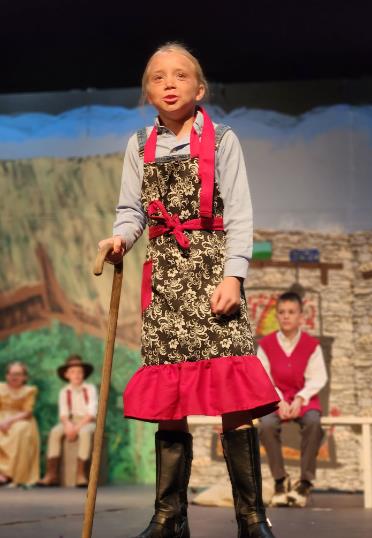
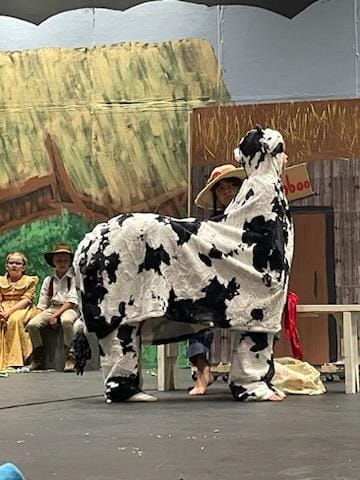
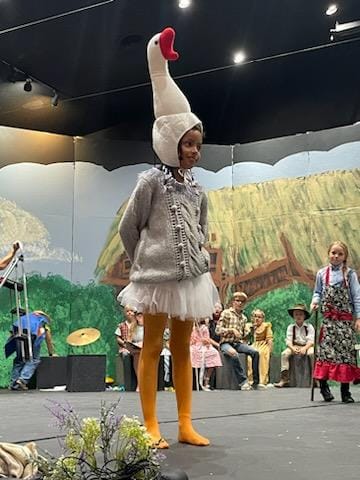
ArtReach's
Mountain Version of Jack
and the Beanstalk - Rebel's Bluff Youth Theatre, MO
Many
modern interpretations have followed and made the giant a villain,
terrorizing smaller folk and stealing from them, so that Jack becomes
a legitimate protagonist. For example, the 1952 film starring Abbott
and Costello the giant is blamed for poverty at the foot of the
beanstalk, as he has been stealing food and wealth and the hen that
lays golden eggs originally belonged to Jack's family. In other
versions it is implied that the giant had stolen both the hen and the
harp from Jack's father. Then there’s “Jack, the Giant
Killer,” which tells the story of a brave and clever
farmer’s son who kills several giants with names like Cormoran
and Blunderbore. The Jack tales were first put into print in the 18th century.
"Jack
teaches them that they can outsmart the giants."
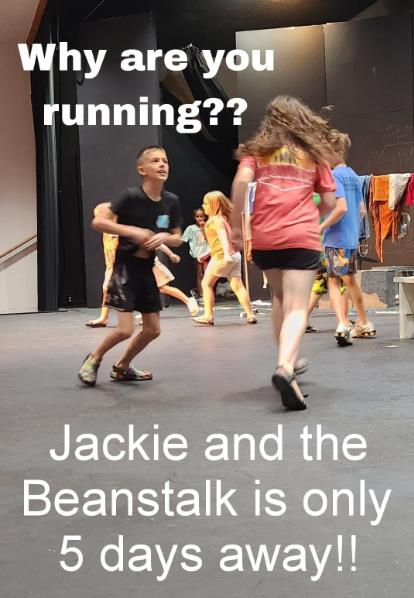
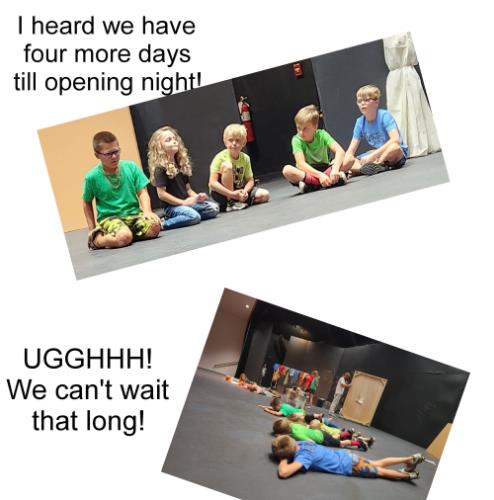
ArtReach's
Mountain Version of Jack
and the Beanstalk - Rebel's Bluff Youth Theatre, MO
The
tales eventually made their way from England to the Appalachian
region in the United States where they were adopted to fit the
culture and became part of a rich oral tradition. While the setting
may have changed, the stories remain remarkably the same,
candlesticks, beanstalks and all.
Child
psychologist Bruno Bettelheim observed in The Uses of Enchantment:
The Meaning and Importance of Fairy Tales (1976) that children may
experience "grown-ups" as frightening giants, but stories
such as "Jack" teach them that they can outsmart the giants
and can "get the better of them." Bettelheim observes that
a parent may be reluctant to read a story to a child about adults
being outsmarted by children, but notes that the child understands
intuitively that, in reading him the tale, the parent has given his
approval for "playing with the idea of getting the better of
giants", and of retaliating "in fantasy for the threat
which adult dominance entails".
“While
writing 'Cold Mountain,' I held maps of two geographies, two worlds,
in my mind as I wrote. One was an early map of North Carolina.
Overlaying it, though, was an imagined map of the landscape Jack
travels in the southern Appalachian folktales. He's much the same
Jack who climbs the beanstalk, vulnerable and clever and opportunistic.”
Charles
Frazier, Cold Mountain

Discussion
Ideas for Harriet Tubman: Take
My Hand and Follow Me
Themes for
Classroom Lessons, Teachers
Caring
for Others: Why do you think Harriet put herself
in danger to help others? Do you care that much about other people?
Is it better to help others or to take care of yourself instead? If
you knew someone was very unhappy, would you go to great lengths to
help them have a better life?
Heroes:
To many people Harriet is a great hero. Do you think
so and why? Talk about heroes in movies and talk about why they are
considered heroes? Do you have heroes? Who are they and why do you
look up to them? What is the difference between movie heroes and
heroes in real life?
"Who
are your heroes and why?"
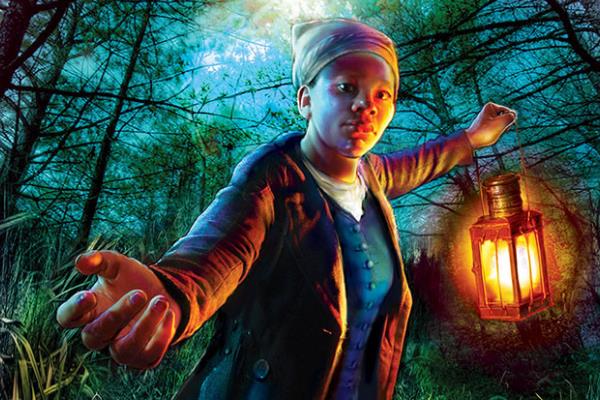
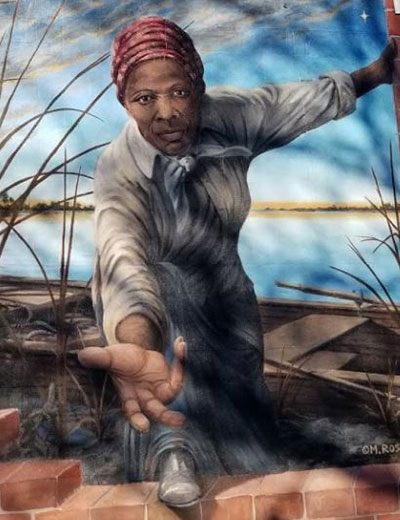
Commitment:
Why did Harriet take the extreme stand of refusing to let her
runaways return home when the trip became too hard for them?
Reading
and Writing: Most people enslaved during
Harriet's life were forbidden to read or write. Can you imagine why?
How would your life be different if you were not allowed to read and write?
Spirituals:
Why do you think the songs were sung by the performers and the
audience? What do you think the spirituals meant to the enslaved
people who created them? What do you think these lyrics meant to
them? Also, discuss what they meant in terms of the Underground
Railroad: "I'm bound for the promised land." "A
band of angels coming after me, Coming for to carry me home."
"I
go ahead to make a place for you."
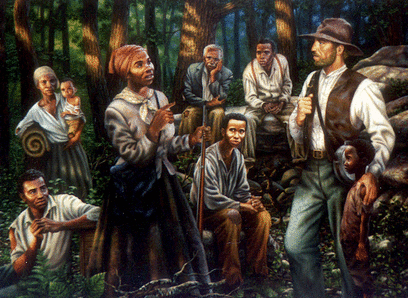
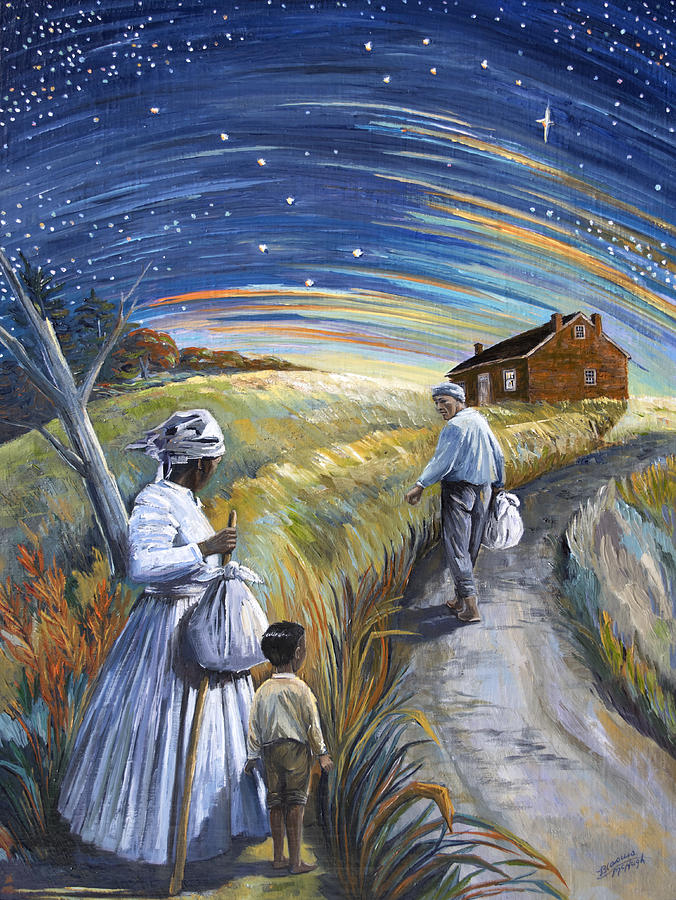
Harriet's
Own Words: Discuss these quotes: "Keep
going." "I never ran my train off the track and I
never lost a passenger." "I go ahead to make a place
for you."

Creative
Dramatics for The Jungle Book
From
classroom to jungle with The
Jungle Book
Create Your Own Jungle:
Push back the desks and draw a magic circle on the floor. You
may do this by putting objects from the classroom in a circle on the
floor. Leave room for action inside the circle.
Now discuss thing that you
might find in the jungle: tigers, wolves, bugs, birds, rocks,
logs, flowers, snakes etc. Have each student choose a
"jungle thing” in their minds. Have them keep it a
secret! Now have two or three students step inside the circle
and become their "jungle thing”. Others may enter the
circle one by one to encounter these objects. Have them guess
what things they have met. Now switch roles: The
"jungle things” now are just people and the people are the
"jungle things”. How do they react to one
another? If one encounters a flower he might sniff it; another
might encounter a snake and jump over it. You can also do
this activity without the guessing game. Have students enter
the "jungle” and simply enjoy it.
"Now
This is the Law of the Jungle..."
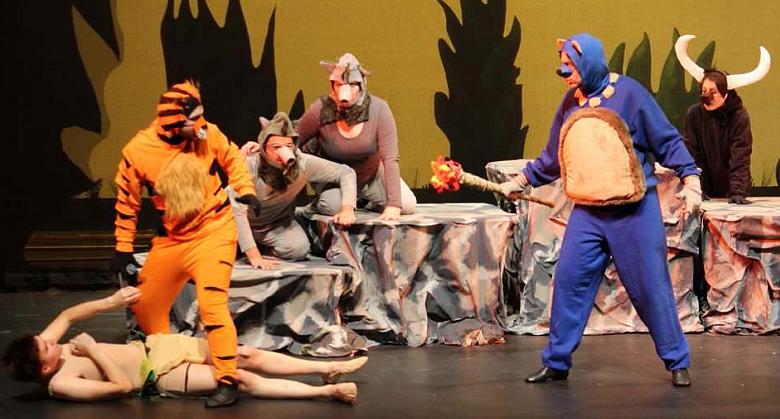
"...As
Old and As True As the Sky!" -- Rudyard Kipling
Raised by Wolves: What
do you think it was like for Mowgli to have brother and sister who
are wolves? What if you were raised as an animal in the
wild? Consider if your family was made up of porcupines, lions,
elephants or squirrels. What would you wear? What would
you eat? What sound would you make when you are hungry or
frightened? Have children perform the animal they might have
been raised by and have the others guess what it is. Tell the
class what your childhood was like living in the jungle.
Is
Your School Performing The
Little Mermaid?
Have an
Underwater Sea Party!
Invitations
The wording of your under the
sea birthday party invitations can say "Calling all Jellyfish,
Sharks, Squid and Seals, too...There's going to be an adventure, and
we'd love to share it with you! You're O-Fish-ally invited to come
under the sea. It's (your child's name) Under the Sea Birthday
Party!". Then include day, time, address.
Here is a slightly different
idea for your under the sea party invitations. Make your under the
sea birthday party invitations as "messages-in-bottles."
Simply fill clear plastic bottles with sand, mini sea shells,
glitter, etc. Write your invitations on parchment paper, then roll
them into scrolls, and insert invitations into bottles.
Decorations
Decorate your under the sea
birthday party room with green and blue balloons. Hang green
"seaweed" streamers from the ceiling, chairs, or from the
top of a windowsill. Cut out starfish, seahorses, and other sea
animals from construction paper. Tape cutouts to some of the streamers.
"Have
Little
Mermaid Party!"
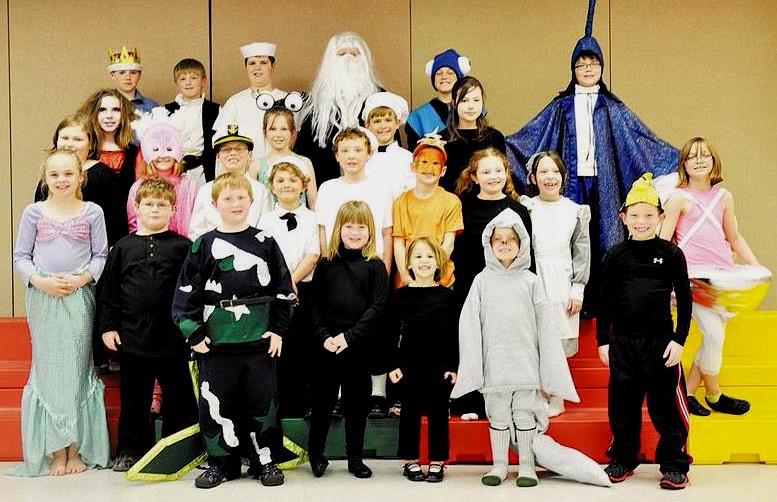
ArtReach's The
Little Mermaid- Osceola Children's Theatre, Osceola IA
Cover the lights in the room
with blue cellophane paper, which will give the party "under
water" feeling. Spread out any stuffed sea animals that you
might have around the room. Have Mylar fish and dolphin balloons
free-floating in the area, and have lots of blue latex balloons on
the floor to create "ocean atmosphere." Hang a fish net in
the corner of the under the sea birthday party room.
Put a blue or turquoise
tablecloth on your under the sea party table, and then spread
multi-colored confetti around it. Put plastic fish in a clear bowl
for table centerpiece. Hang a personalized theme "Happy
Birthday!" banner in the area.
Guest
Arrival and Introductory Activities
Seascape Gel Bags: Here are
some directions for your under the sea birthday party guests to
follow for this activity.
Cut small fish from foam
paper. Fill a Ziploc bag with blue hair gel so when the bag is closed
it's about 1/4" thick. Place the fish shapes, colored beads, and
some glitter in the bag. Squeeze out excess air from the bag before
sealing it.
Place the bag, sealed end
first, inside another bag. Seal the second bag and cover the zipped
end with clear tape. Have children make the fish move by running
their hands over the surface of the bag.
Sea Life Mural: Tape a wide
sheet of butcher paper on the wall at kids' eye level. Spread posters
and pictures of tropical fish, dolphins, sharks, and other sea
animals for ideas. Provide the kids with paints and markers,
and let them create a mural of sea life.
"Kids
are fascinated with sea life!"
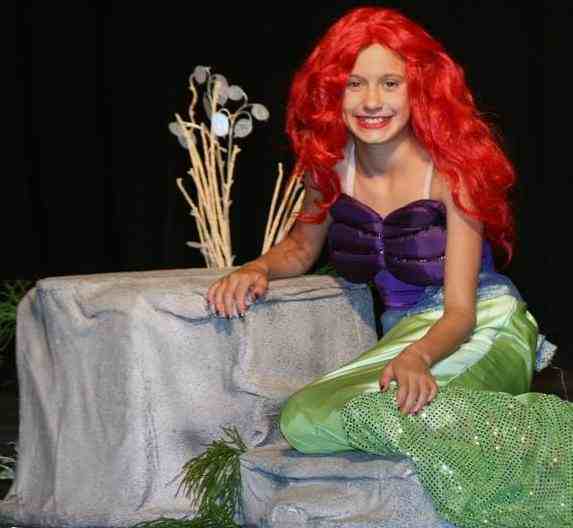
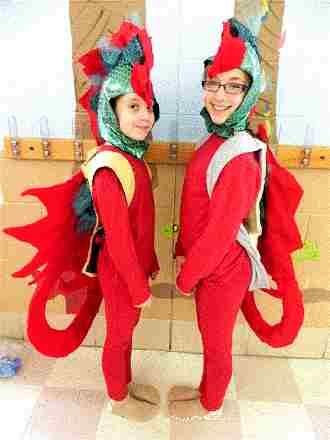
ArtReach's The
Little Mermaid -- Lindsey
School, Chesterland, OH
Party
Favors
Since kids are fascinated with
sea life, any theme related items as keepsakes will do the trick! For
your under the sea party favors, you can have such items as beach
balls, fish squirts, straws, sticker sheets, toy dolphins, and starfishes.
Under
the Sea Birthday Party Games
Pin-the-Tail
on the Whale: This classic
game is easy to design and set up. Just draw a large whale on paper,
leaving out the tail. Then cut out "whale tails" for all
your guests. Put children's initials and a double-sided tape on each tail.
At game time, blindfold the
kids one by one, spin them around, and get them to pin their tail
shapes where they belong.
Shark
Chase: Get the kids to spread out on one side of the
party area - they are fish. Scatter five or more hula hoops around
the opposite side of the area (the hoops are the fish's "homes").
Select one child to be a
shark, and have that player stand between the "fish" and
their "homes." When the "shark" calls Shark!, he
or she runs after the "fish" and tags as many as possible.
The fish must reach home - step inside the hula hoop - to be safe
from the shark.
Any player who is tagged
becomes a shark for the next round, and tags remaining fish. For each
round, take away one hula hoop until only one hoop is left. The game
continues until all the fish are caught.
Beanbag
Fish Toss: Place candies or
small prizes in three or four pails. Place the pails against the
walls. Have a couple of beanbags for children to throw. (It's ideal
that you make a beanbag that looks like fish, but it's not crucial!)
Have the kids take turns
throwing beanbags into a pail. Allow children to choose a prize from
whatever bucket the beanbag lands in. Be sure every under the sea
birthday party guest receives a prize.
"Have
a Beanbag
Fish Toss."
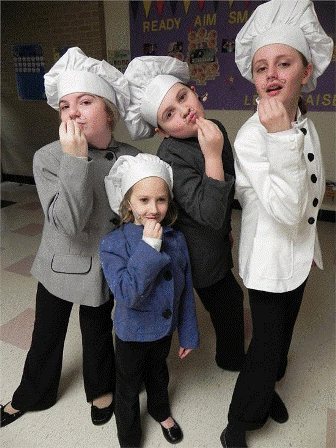
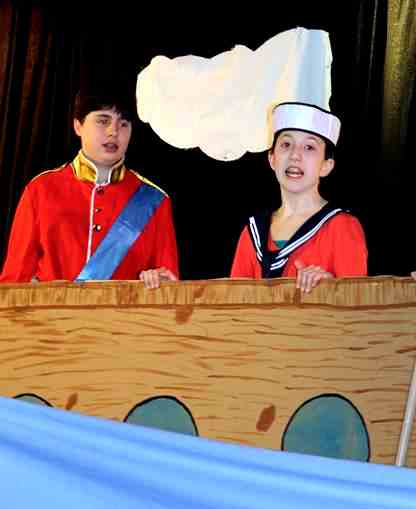
ArtReach's The
Little Mermaid -- Lindsey
School, Chesterland, OH
Octopus
Alert: Here is a great
outdoor game for under the sea birthday party, and it will require
water balloons. Choose one person to be an octopus. Arrange everyone
else in a big circle around the octopus. Have the kids in the circle
toss a water balloon back and forth, trying to keep it away from the octopus.
If the octopus pops the water
balloon by batting it out of the circle, the person who threw it is
out. Last child left in the circle wins.
Musical
Sea Animal: Have your party guests sit in a circle.
Play lively music in the background, and let the kids pass around a
sea animal toy. Whenever the music stops the person holding the toy -
goes out of the game, and receives a prize (e.g., favor bag). Play
until everyone has won a prize.
Creature
Magnets: Draw various sea
creatures (e.g., seahorses, tropical fish, octopuses, etc.) on
crafting foam, and cut out creature shapes. At game time, have the
kids glue craft eyes onto the creature's head. Next, get them to draw
a mouth with a marker. They can decorate the creature with sequins,
beads, rickrack, and other craft materials.
Fish
Story: Here is an activity
where the kids can create their own story. Invite all your
under the sea birthday party guests to write a beginning sentence on
a slip of paper about sea life. (e.g., "Once upon a time, deep
under the water surface an octopus was born.") Put all the slips
of paper into a bowl.
Have the kids sit in a circle.
Choose one player to pick one slip from a bowl, read it out loud, and
then add a sentence related to the original one (but even more
exaggerated than the last). The round continues until everyone has
had a chance to add a sentence. Then a new slip can be drawn from a bowl.
Snow
White and the Seven Dwarfs
Discussion /
Questions: Let's talk about fairy tales!
Did you know that there are
many versions of Snow White and
the Seven Dwarfs. Does anyone know a story different from
the Disney movie? Has anyone read the story, Little Snow-White,
by The Brothers Grimm? (Introduce the children to the concept
of different stories - the play is NOT exactly like the Disney
version, neither is the original Grimms' version, etc.)
What is the difference between
the story "Snow White" and a Snow White story? (A
Snow White story is similar to the familiar story, Show White, but it
can have different characters, different names, different location, etc.)
"There
are many versions of Snow White!"
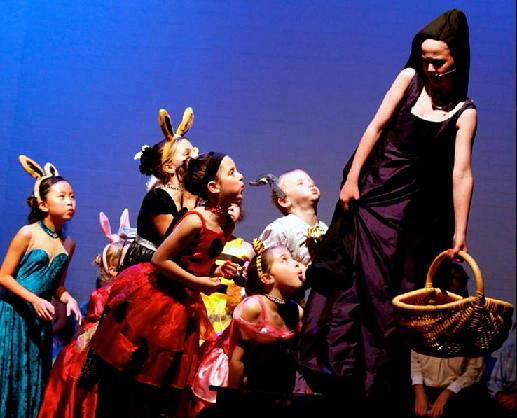
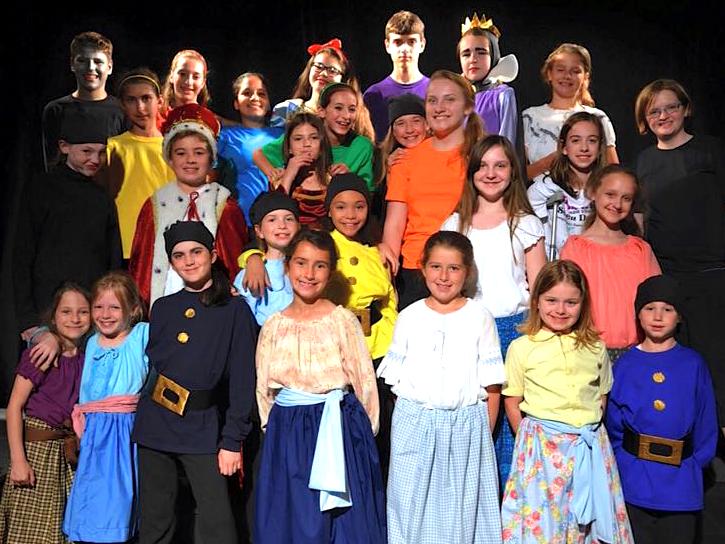
Perth Youth Theatre, AU -
Newington Children's Theatre, CT - ArtReach's Snow
White
What are the basic elements of
a Fairy Tale?
"Once upon a time."
"Kind person (treated badly)
"Bad person(s)
"Royalty or famous person
"Magic person and magic spell
"Lived happily ever after."
What if Show White wore a
green dress... Could she be "Snow Green", or "Forest
Green"? Or blue? "Sky Blue and the Seven
Dwarfs"? What about "Sun Gold and the Seven
Daffodils"? (Encourage the children to be creative - maybe
your play will be different, maybe?)
Can you make up another Show
White story? About a girl in Japan? About a boy in
Africa? About a girl in your town? About you? What
about a fish in the ocean? The Prince is a rock star? The
Dwarfs are Puppy-dogs? The mirror is a TV! (Work
with the children to create a whole new Cinderella story using the
elements above. This is always lots of fun.)
What are some other fairy
tales besides Snow White? (Cinderella, Sleeping Beauty, Beauty
and the Beast, Rumpelstiltskin, etc...)
Why are some stories called
folk tales, some called fairy tales? What is folklore? (Folk
tales are old stories told and retold over many years, fairy tales
are generally folk tales for kids and usually begin with "Once
upon a time -" Folklore is like folk tales, but may
not be an entire story - witches flying on brooms, frogs turning into
princes, are bits of folklore.) Do you know of any folk tales
or folklore that are not fairy tales? (King Arthur, Headless
Horseman, Paul Bunyan, Loch Ness Monster, Tooth Fairy, Dragons,
Ghosts, Goblins, Witches, etc.)
Make
a Dragon Costume!
Ideas for
ArtReach's The Reluctant Dragon
There are many
kinds of dragons you may like to represent in your production of
Artreach's The Reluctant Dragon.
First you might consider the illustrations in the many book versions
of Kenneth Grahame’s original short story. You may of course,
receive requests from your young performers to represent Mortimer as
the dragon in the popular movies, How to Train your Dragon. Don’t
forget to look at the Chinese tradition of Dragons, which can be
very colorful and an exciting way to introduce your students to a new
culture. Finally, consider making just the mask to represent
Mortimer’s costume.
Easy! Coolest
Homemade Dragon Costumes: Here’s a great blog with terrific
ideas on how to make dragon costumes for young performers: https://www.coolest-homemade-costumes.com/dragon-costumes.html
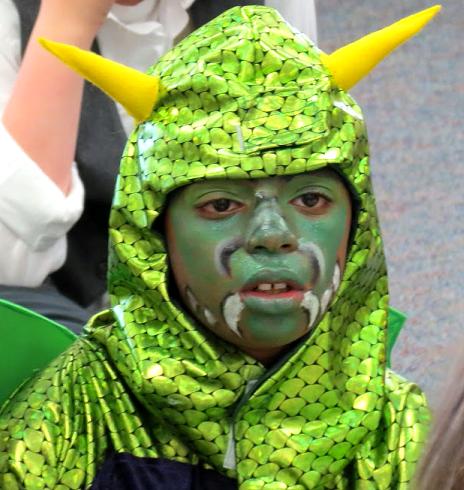
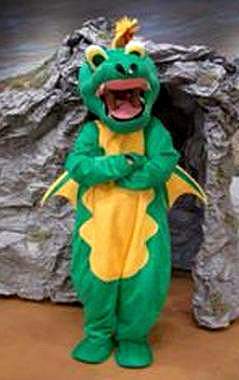
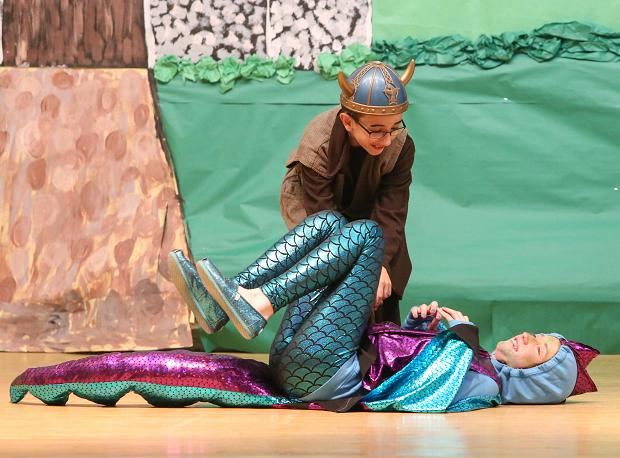
ArtReach's The
Reluctant Dragon - Have fun with costumes for all!
How to Make
Wheelchair Costumes for Kids: Turn
wheelchairs into costumes! Dragons and spaceships! Use this article
to imagine your own ideas for wheelchair costumes. Article: An
Oregon dad of disabled children creates larger than life Halloween
costumes for his children and with help from DreamWorks and generous
donors, other disabled children can shine too. Whether he's making a
medieval knight or a dragon, Ryan Weimer's unconditional love for his
sons Keaton, 9, and Bryce, 2, has led him to create sensational
costumes for his children every year.
Read More:
https://ideas.coolest-homemade-costumes.com/halloween/creative-costumes/
Treasure
Island Creative
Dramatics
Idea - An Introduction to Fencing
Use the
resources hiding in your community! Find experts and sponsor
workshops related
to your school's performance.
Find
new ways to involve everyone in the community!

Young Footliters, Iowa City -
ArtReach's Treasure Island
There are hidden experts in
your community. Call theatres and other community organizations
and ask about who might be available to do workshops. Young
Footliters of Iowa City identified the local Fencing Center.
These experts offered free workshops fo the community as a way to
invlve others in the rehearsal process. It's a great way
to enhance publicity for your special event.
Registration: 1-3 pm (Grades
1-6) 4-6 pm (Any Grade) Where - The Iowa City Fencing Center,
415 Highland Ave, Iowa City
To celebrate Young Footliter's
upcoming production of Treasure
Island, the Iowa City Fencing Center has generously offered to
hold an introduction to fencing class as a fundraiser for Young Footliters!
This program will take you
from how to stand on guard to fencing your first bout in just two
hours. You'll discover how to outwit your opponent with the play of
your blade and the movements of your feet, while experiencing the
thrill of scoring your first touches. This is a safe activity for all
ages 6+.
This
is a safe activity for all ages 6+.
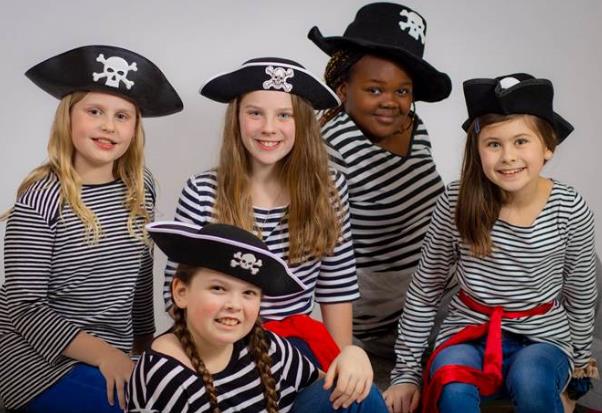
Young Footliters, Iowa City -
ArtReach's Treasure Island
Clothing: Participants
will need to wear long, comfortable pants, a t-shirt, and bring
clean, dry athletic shoes to put on.
Paperwork: There will be
a registration form and waiver form for participants to fill out when
you arrive.
Adults and children ages 6 and
up are welcome to participate, so parents and siblings can fence too.
And of course, anyone is welcome to stay and watch.
The
Story of Sadako Sasaki and A
Thousand Cranes
Before the play
read Sadako's true story. Discuss how her life has changed the world.
Sadako Sasaki was born on
January 7, 1943 in Hiroshima, Japan. She was two years old when the
atomic bomb was dropped on August 6, 1945, roughly two kilometers
(1.25 miles) from her home. Sadako will forever be remembered as a
symbol of innocent victims of war. This story is to remember her life
and tenacity of spirit.
"Sadako
will forever be remembered as a symbol."
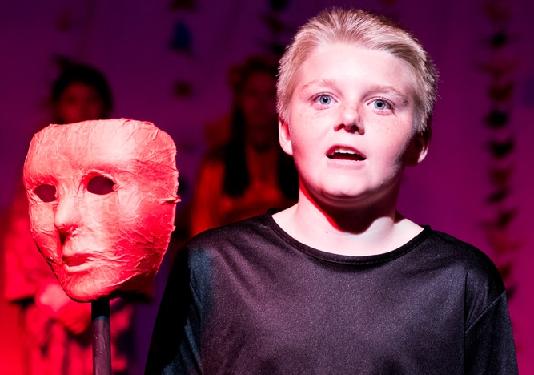
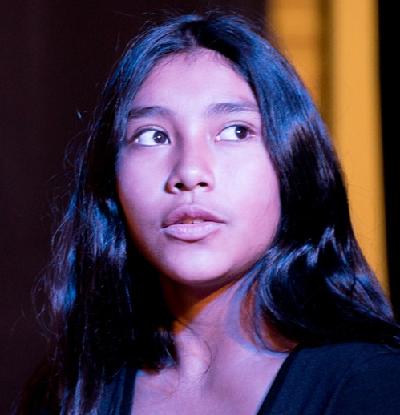
Denver Academy, CO -
ArtReach's A Thousand Cranes
The play opens with meeting
Sadako and her inviting the audience to hear her story. She loves to
run and practices every day with her best friend and classmate,
Kenji. They are preparing for a race next month and Sadako really
wants to win. Kenji thinks that Sadako is fast enough to win the
race. Sadako runs home to tell her parents, who are preparing for
dinner and the upcoming Obon festivities.
Obon is a Japanese Buddhist
custom to honor the spirits of one s ancestors. It is tradition to
light a candle for each ancestor who has died. Sadako and her parents
are remembering her Grandmother, Oba Chan, who died in the bombing of Hiroshima.
"Don't
you remember that old story about the crane?"

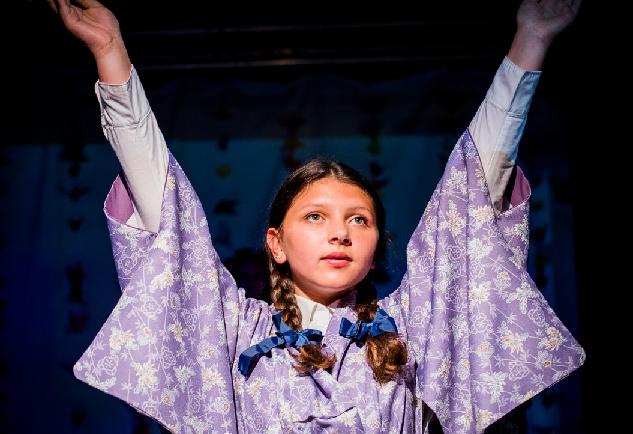
Denver Academy, CO -
ArtReach's A Thousand Cranes
As Kenji and Sadako are out
practicing for the upcoming race, Sadako becomes very dizzy and
falls. She is rushed to the hospital. No one seems to know what is
wrong with her. After a number of tests, the doctors conclude that
Sadako has Leukemia, or the atom-bomb sickness. She has to stay in
the hospital for a few weeks to get some tests done. This means
Sadako will miss the race she has been practicing for. While in the
hospital, her parents and Kenji visit often. Kenji has come up with a
plan to make Sadako well again.
He reminds Sadako of the story
of a Thousand Cranes: Don't you remember that old story about the
crane? It's supposed to live for a thousand years. If a sick person
folds one thousand paper cranes, the gods will grant her wish and
make her healthy again. Sadako gets right to work making her thousand
cranes. However, her leukemia is also progressing and getting worse.
This makes her tired and it more difficult to fold the cranes.
"Oba
Chan tells Sadako that the cranes will be completed."
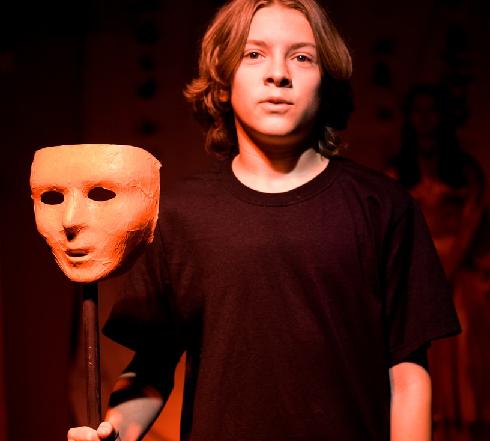
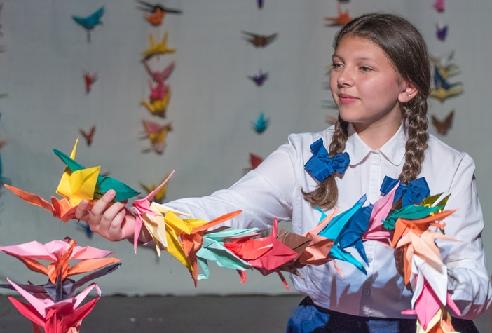
Denver Academy, CO -
ArtReach's A Thousand Cranes
One night while she is
sleeping, the spirit of her grandmother, Oba Chan, comes to visit
Sadako. Oba Chan takes Sadako on a journey through the spirit world
showing her the spirits of others who died because of the Atomic
Bombing of Hiroshima. Oba Chan tells Sadako that she must stay in the
spirit world with them. Sadako is not ready, she hasn't folded her
thousand cranes. Oba Chan tells Sadako that the cranes will be completed.
Sadako died on October 25,
1955, ten years after the bomb fell. Her friends and classmates
completed her thousand cranes for her. In 1958, they had a monument
built to honor her memory in the Hiroshima Peace Park. Sadako s wish
is engraved on the base of the statue:
This
is our cry, This is our prayer, Peace in the World.
Learning
About Tchaikovsky's Nutcracker
Classroom
Discussion for ArtReach's 'The
Nutcracker Prince'
How
to say the name:
"Tchaikovsky" is
said like Ch-eye-cough-ski. 'Pyotr Ilyich' is said like 'Peter Il-itch'.
'The
Nutcracker' is performed all over the world around Christmas time.
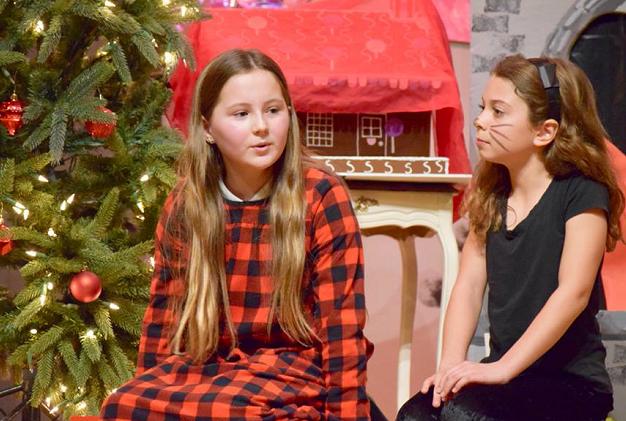
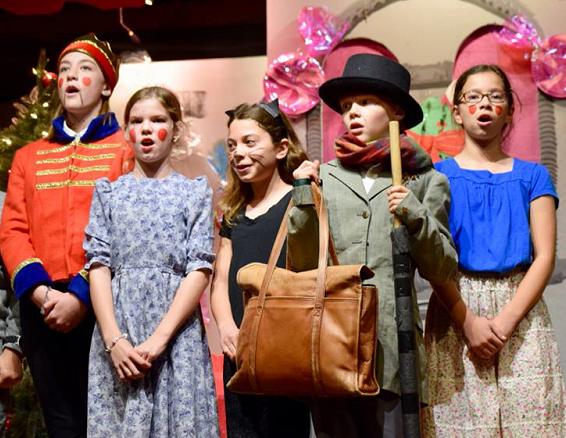
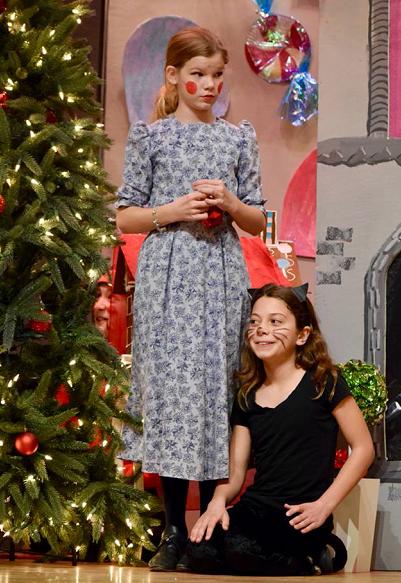
The
Nutcracker Prince - Wakefield Country Day School, Washington VA
Type
of music:
Romantic classical music.
Some famous works:
1812 Overture (for orchestra,
choir and real canons!).
Symphonies Nos. 4, 5 and 6.
Swan Lake (a ballet).
Sleeping Beauty (a ballet).
The Nutcracker (a ballet, see
next page for list of pieces)
Piano Concerto No. 1.
Eugene Onegin (an opera).
The Queen of Spades (an opera).
Marche Slave (Slavonic March
for orchestra).
Some
interesting facts:
Tchaikovsky's music is some of
the most popular classical music around today. Many people who don't
normally listen to classical music will recognize a tune or two by him.
His music often has very
beautiful tunes.
His music is full of strong
emotions. These strong emotions can be heard and understood very easily.
The strongest emotions are
probably in Symphony No. 6 (the 'Pathetique'). This symphony was
first heard only nine days before he died.
His music sounds Russian to
people outside Russia. However, it sounded like Western European
music to people in Russia at the time it was written.
His ballets are the world's
most popular ballets. And 'The Nutcracker' is performed all over the
world around Christmas time.
The 'Dance of the Sugar Plum
Fairy' from 'The Nutcracker' is famous for using an instrument that
was very new at the time-the celesta. This looks like a small piano
and makes a tinkly sound (this instrument also appears at the
beginning of the 'Harry Potter' film music).
Although the 1812 Overture is
very popular, Tchaikovsky didn't really like it!
The
History of The Legend of Mulan
(400 AD Onward)
Ancient texts
from the past 1,500 years reveal the real history behind The
Legend of Mulan and how it developed into what we have today.
Around 400 AD, a poem began
circulating imperial China. It told of a young girl (most likely in
her early teens) who made the momentous decision to take her father's
place in battle. Although modern historians now believe this poem to
be fictitious, early historians (most notably, Zhu Guozhen) insisted
that the Ballad of Mulan was an autobiography. Regardless of the
authenticity of the original tale, this amazing story went on to
inspire one of the greatest legends ever told.
For over a hundred years, the
Ballad of Mulan was passed down via oral tradition, until it was
finally written down during the Tang dynasty. Around this same time,
several authors (Wei Yuanfu, Bai Juyi, Du Mu, and Li Rong) also wrote
accounts verifying Mulan's story.
"A
touching story of honor, virtue, and sacrifice."
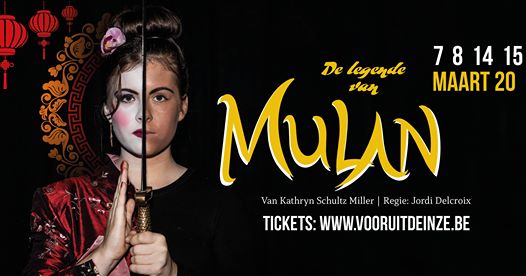
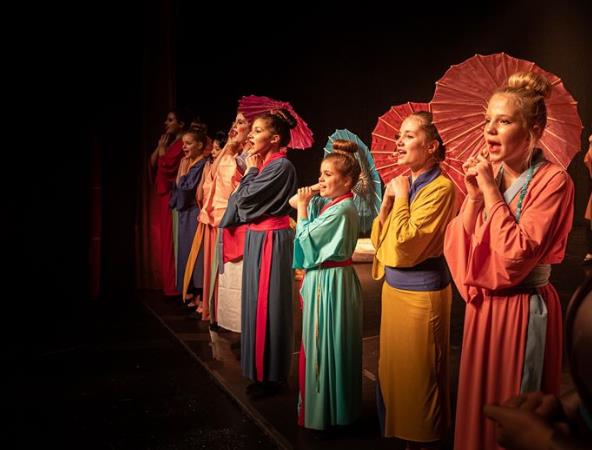
ArtReach's The
Legend of Mulan - Jeugdtheater Crea Deinze, Deinze, Belgium
The early narratives about
Mulan were are all very short. They provide enough information to
verify that Mulan took her father's place in battle, served for
twelve or thirteen years without her femininity ever being
discovered, and was rewarded by the emperor for her accomplishments.
Due to the brevity of these accounts, later authors became fascinated
with Mulan's story and began embellishing it. After all, Mulan's
story has such a fantastic premise that it begs to be told in a more
elaborate form.
Around 1500 AD, Xu Wei wrote
the play Mulan Joins the Army. Although this play was short (the
unannotated manuscript is twelve pages), Xu Wei inserted reimagined
the story in a way that would capture the imaginations of the common
people. Xu Wei took a lot of liberties with this play and
wasn't overly concerned with historical accuracy. For example, the
play included Mulan with bound feet&ldots; which is the ancient
equivalent of having a woman soldier wearing sexy armor. One version
of the manuscript even explicitly instructs the actress playing Mulan
to change clothes in full view of the audience.
The play primarily focuses on
Mulan's life as a woman. After she spends a long time preparing to go
to war, the narrator blitzes through a decade of military service to
show the audience Mulan resuming her life as a woman. Although no
records exist of Xu Wei's play ever being performed, the printed
manuscript circulated widely throughout China. Thus, in its written
form, this play inspired a renewed interest in the legend.
After the Ming dynasty fell,
the Chinese people found themselves under barbarian rule.
During this time, the Chinese people took solace in Mulan's story, as
they desired for such a hero to rise up amongst them. The most famous
retelling of Mulan's story to be written during this time was Romance
of Sui and Tang by Chu Renhuo, which was written to incite feelings
of animosity against those who oppressed the Chinese. In the novel,
Mulan is a biracial teen who is initially loyal to the barbarian
khan. Although she begins fighting against a Chinese enemy, she is
captured by a Chinese princess, who turns out to be such a benevolent
captor that Mulan eventually desires to return home to bring her
family to dwell together with the princess. However, the khan
intercepts Mulan and tries to take her as his concubine by force.
When Mulan realizes that the khan will not allow her to refuse, she
commits suicide on her father's grave.
"Mulan
continues to be an inspiration to live virtuously."
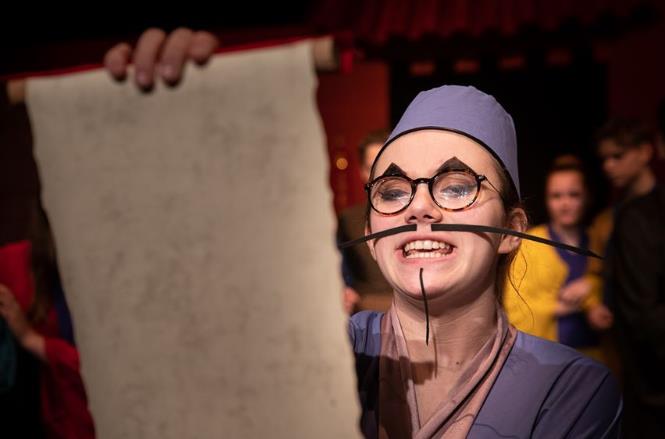
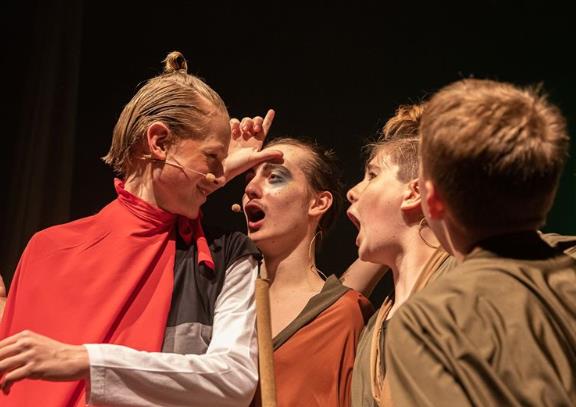
ArtReach's The
Legend of Mulan - Jeugdtheater Crea Deinze, Deinze, Belgium
The Complete Account of
Extraordinary Mulan was a very different novel, in that it encouraged
its readers to withdraw from society and rise above evil by living
virtuous lives. The author, who seems to be a pacifist, uses the
novel to glorify monasticism. The novel begins by focusing on Mulan's
grandfather, an ambitious young scholar. As he pursues enlightenment,
however, he learns the virtue of inaction. After his granddaughter
Mulan is born, he teaches her the art of magic but warns that
responsible use of magic is so difficult that he has never found an
occasion where the use of magic would be proper. Although Mulan
eventually learns how to use her power for good, evil still triumphs
in the end.
One of the most famous early
film adaptations of Mulan's story was the 1939 motion picture Mulan
Joins the Army. Because this coincided with the early stages of World
War II, after the Japanese had already captured Nanjing (China's
capital city at the time), the filmmakers desired to make it into a
call to arms. This film glorifies warfare and is the first adaptation
of the legend to introduce romance into Mulan's story.
"Her
story has touched the hearts of countless generations."
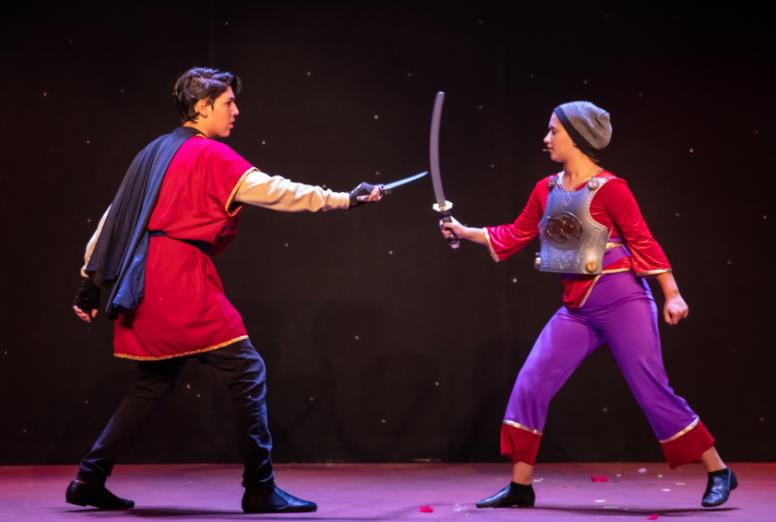
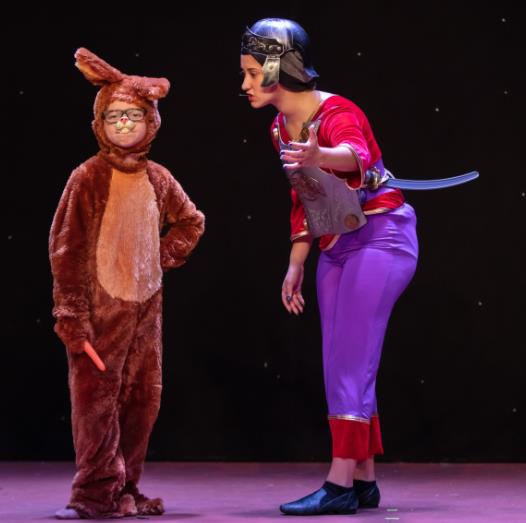
ArtReach's The
Legend of Mulan - Wolf Creek Collective, Cape Coral FL
After Word War II ended, China
was now under communist rule. The people of Hong Kong, who were under
British rule, began to wonder if they had anything left in common
with the mainland. In 1998, the first English-language film
adaptation of Mulan's story was released. Although Disney's Mulan was
a success in America (it was the second highest grossing movie in
1998), it was poorly received in China. Almost immediately after the
release of the Disney film, Starlight International Media announced
plans to produce Mulan: Rise of a Warrior.
Throughout the film, Mulan
struggles to put the needs of the masses above her own emotions.
Being that she cares for certain comrades more than others, she
repeatedly makes decisions that put her men at risk in attempt to
rescue her closet friends. When her dear friend Wentai fakes his own
death, Mulan is thrown into depression until she finally learns to
detach herself from the battlefield.
Disney's film, is purported to
draw inspiration from both Chinese and American cultures. Mulan's
story has traversed the globe several times and has touched the
hearts and minds of countless generations since the story was first
conceived over a millennium ago. While we may never know the details
of her true story (if she really did exist), Mulan continues to be an
inspiration to live virtuously when faced with crisis. Throughout the
ages, the legend has continued to tell the story of a woman who is
prepared to sacrifice everything out of filial devotion to her
father. The legend always has been, and always will be, a
touching story of honor, virtue, and sacrifice.